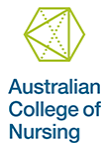Child Development in the Family Context

The purpose of this unit of study is to help students explore child development within the child’s family, culture, and environment.
Nurses working in partnership with infants, children, and their families must have in-depth knowledge and understanding of a child’s physical, emotional, cognitive, and social development and the influences on their development in the early years. This knowledge assists nurses in promoting and strengthening the relationship between young children and their support networks, therefore enabling the attachment process, a fundamental element in healthy development.
Central to the role of a nurse working with young children and families is acquiring growth and developmental assessment skills. Assessing, screening, and monitoring a child’s development throughout the early years provides a good foundation for person-centred health promotion and facilitates early intervention when developmental issues are detected.
Students studying this Unit will consolidate their theoretical learning through a 40-hour professional experience placement in a child and family health setting.
Term : JANUARY, JULY
Hours of Study: 150
Credit Points : 6
Theme 1: Developmental foundations and influences
Evaluate the research, policies, models, and frameworks that provide parameters for assessing screening, and monitoring child development in the early years
Theme 2: Developmental surveillance and health monitoring
Critically analyse the complex social, cultural, and environmental factors that influence developmental outcomes in young children
Theme 3: Developmental progression in infancy & toddlerhood
Apply advanced knowledge of developmental foundations and theories to support infants’ and children’s biopsychosocial and emotional needs
Theme 4: Developmental progression in the pre-school years
Interpret the signs of perinatal distress that can influence infant-parent attachment and infant mental health and wellbeing
Theme 5: Supporting optimal development
- Implement effective communication strategies that strengthen partnerships with parents, families, community networks
- Reflect on the nurse’s role in facilitating parents’ understanding of their child’s developmental needs through health education and parenting skill development
- Anaesthesia Fundamentals | Anatomy | Hazards of Po...
- Posted By eIntegrity Healthcare e-Learning
- Posted Date: 2024-11-25
- Location:Online
- The patient positioned for surgery is vulnerable to extraneous harm. Knowledge of the common injuries and understanding of the causes of harm enables the anaesthetist to minimize the risks.
- Anaesthesia Fundamentals | Anatomy | Bones And Joi...
- Posted By eIntegrity Healthcare e-Learning
- Posted Date: 2024-11-25
- Location:Online
- This session describes the anatomy of the upper and lower limbs, concentrating on the bones and joints. Particular attention is paid to those bones and joints that are of importance to the anaesthetist.
- Anaesthesia Fundamentals | Anatomy | Facial Skelet...
- Posted By eIntegrity Healthcare e-Learning
- Posted Date: 2024-11-25
- Location:Online
- This session describes the bones of the facial skeleton and skull vault. The important muscles that move the mandible are described. The classification and positions of fracture lines commonly seen following trauma to the face and surgical osteotomy are a
- Anaesthesia Fundamentals | Anatomy | Spine Part 2:...
- Posted By eIntegrity Healthcare e-Learning
- Posted Date: 2024-11-25
- Location:Online
- This session covers the anatomy of the sacrum, coccyx and sacral hiatus. It describes the intervertebral discs and spinal ligaments, and the vertebral levels of some of the surface markings of the body. The different types of spina bifida are reviewed.
- Anaesthesia Fundamentals | Anatomy | Spine: Cervic...
- Posted By eIntegrity Healthcare e-Learning
- Posted Date: 2024-11-25
- Location:Online
- The session covers the anatomy of the bones of the vertebral column in the cervical, thoracic and lumbar regions.


